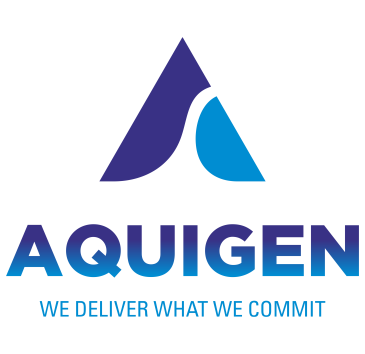N-Nitroso compounds (NOCs) are a class of chemical compounds that have gained significant attention in the scientific community due to their potential health implications. These compounds, which contain the N-N=O functional group, are of particular interest in the pharmaceutical and food industries, as they can be formed during various manufacturing and storage processes. Understanding the nature, sources, and potential risks associated with N-Nitroso compounds is crucial for ensuring the safety and quality of a wide range of products.
At Aquigen Bio Sciences, we are a leading N-Nitroso Impurity Standard Supplier in India. Let us help you delve into understanding N-Nitroso compounds what are they, exploring their characteristics, their formation, and why they matter in the context of human health and product development.
What Are N-Nitroso Compounds?
N-Nitroso compounds are a diverse group of organic compounds that share the common structural feature of a nitrogen-nitrogen-oxygen (N-N=O) moiety. This functional group can be found in a variety of chemical structures, including those derived from secondary amines, tertiary amines, and other nitrogen-containing precursors. The presence of the N-N=O group is what gives these compounds their distinctive characteristics and potential for forming carcinogenic nitrosamines.
Sources and Formation of N-Nitroso Compounds
N-Nitroso compounds can be formed through various pathways, both naturally and during industrial processes. In the natural environment, they can be produced by certain bacteria, found in certain foods, or formed during the combustion of organic matter. In industrial settings, they can be generated during the manufacturing, storage, or even the degradation of various products, including pharmaceuticals, cosmetics, and food items.
One of the primary sources of N-Nitroso compounds in the pharmaceutical industry is the use of secondary or tertiary amines in the synthesis of active pharmaceutical ingredients (APIs) or excipients. These nitrogen-containing compounds can react with nitrites, which are often present as impurities or degradation products, to form N-Nitroso compounds. Additionally, the storage conditions and formulation of certain drug products can also contribute to the formation of these potentially harmful compounds.
Health Concerns and Regulatory Oversight
The primary health concern associated with N-Nitroso compounds is their potential carcinogenic properties. Many N-Nitroso compounds have been shown to be genotoxic, meaning they can directly interact with and damage DNA, leading to the development of cancer. This has prompted regulatory bodies, such as the U.S. Food and Drug Administration (FDA) and the European Medicines Agency (EMA), to establish guidelines and limits for the presence of these compounds in pharmaceutical products.
The FDA, for example, has published guidance on the control of nitrosamine impurities in drug products, outlining the necessary steps manufacturers must take to identify, evaluate, and control the presence of N-Nitroso compounds. Similarly, the EMA has issued guidance on the assessment and control of N-Nitrosamine impurities in human medicinal products, emphasizing the importance of risk assessment and effective mitigation strategies.
Analytical Techniques for Identifying and Quantifying N-Nitroso Compounds
Accurately identifying and quantifying the levels of N-Nitroso compounds in various products is crucial for ensuring compliance with regulatory standards and maintaining product safety. Analytical techniques such as gas chromatography-mass spectrometry (GC-MS) and liquid chromatography-mass spectrometry (LC-MS) are commonly used to detect and measure the presence of these compounds.
These advanced analytical techniques allow for the sensitive and selective detection of N-Nitroso compounds, even at trace levels. By utilizing these methods, manufacturers and quality control laboratories can effectively monitor the levels of these potentially harmful impurities throughout the product development and manufacturing process.
Strategies for Mitigating the Formation of N-Nitroso Compounds
To address the challenges posed by N-Nitroso compounds, various strategies have been developed and implemented by the pharmaceutical industry and regulatory agencies. These strategies include:
- Risk assessment: Conducting thorough risk assessments to identify potential sources of N-Nitroso compounds in the manufacturing process and formulation.
- Process optimization: Optimizing manufacturing processes to minimize the formation of N-Nitroso compounds, such as by controlling the use of nitrites, amines, and other precursors.
- Analytical method development: Developing and validating sensitive and reliable analytical methods for the detection and quantification of N-Nitroso compounds.
- Impurity control: Implementing robust impurity control strategies, including the use of qualified starting materials, effective purification steps, and rigorous testing.
- Stability monitoring: Closely monitoring the stability of drug products during storage to detect any potential formation or accumulation of N-Nitroso compounds over time.
Conclusion
N-Nitroso compounds are a significant concern in the pharmaceutical industry due to their potential carcinogenic properties. Understanding the nature, sources, and formation of these compounds is crucial for ensuring the safety and quality of drug products. By implementing effective risk assessment, process optimization, analytical method development, impurity control, and stability monitoring strategies, pharmaceutical manufacturers can mitigate the risks associated with N-Nitroso compounds and meet the stringent regulatory requirements in place.
At Aquigen Bio Sciences, the top N-Nitroso Impurity Standard Supplier in India, we are the leading provider of impurity standard suppliers in India, offering a comprehensive range of N-Nitroso compound reference standards and other pharmaceutical impurities. Our team of experienced chemists and analytical experts are dedicated to supporting the pharmaceutical industry in the detection, quantification, and control of these critical impurities. With our expertise and cutting-edge analytical capabilities, we are committed to helping our clients navigate the complexities of N-Nitroso compound management and ensure the safety and efficacy of their drug products.


